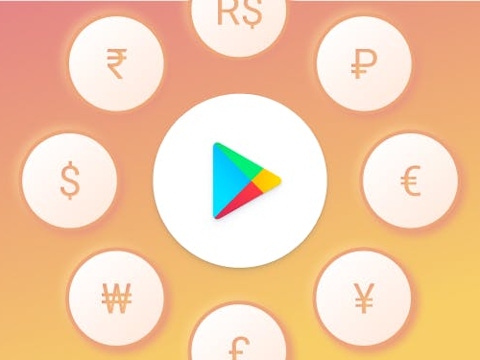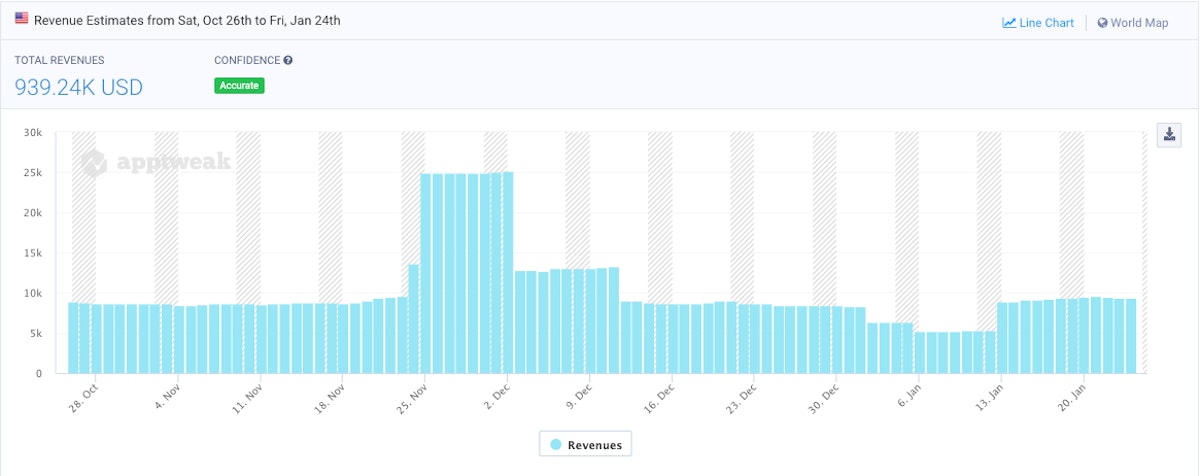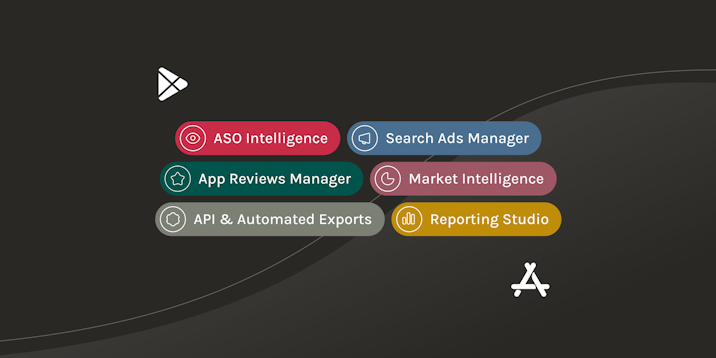
Most Popular Revenue Models in the App Stores
You may have noticed that Google revenue estimates have been available on AppTweak for a couple weeks. You can now see the revenues of any app in any country for Android and iOS.
Interpreting these revenue estimates can be tricky since apps can have very different monetization strategies in the App Store and Google Play. Depending on the revenue model, our estimations can represent a small or large share of the app’s total revenues.
When you’re studying your competitors, make sure you benchmark your app against apps that have a similar revenue model. If you are not sure what category your competitors fall in, we have listed below the most popular strategies in the store.
App Revenue Models
Mobile apps can serve various purposes within a company : in some cases they are only a complement to the core business while in other cases they are the core business. Since they must respond to different needs, product owners will turn towards different revenue models.
Let’s take a closer look at the most popular revenue models in the app stores :
Free app (no revenues)
The app can be downloaded for free and has no revenues, or at least not directly through the Store. It is usually not the core business of the company and serves as an extra product or service. Apps that go with a connected device, personal banking apps or informative apps are good examples of this category since they don’t generate direct revenues through the app.
e.g. Philips Hue
Free app + e-commerce
The app can be downloaded for free but users can purchase items through an e-commerce platform. Since these items are not pure digital products, the revenues don’t go through Apple and Google. This is one of the most common revenue models in the store, especially in sectors such as food delivery, online shopping, mobility…
e.g. Uber Eats
Free app + ads
The app can be downloaded for free and used with no limitation. However the user will be faced with (unwanted) advertising. The company revenues depend solely on this advertising. This practice is widespread among hyper casual games where the players’ lifetime value is very short.
e.g. Helix Jump
Free app + in-app purchases
The app can be downloaded for free but the user needs to pay to access extra features. Since the user is purchasing a digital product, the transaction will be done through “In-App Purchases” (IAP). An example of this would be a free image editing app where some filters are locked but the user can to buy them through IAP.
e.g. VSCO
Free app + in-app purchases + ads
The app can be downloaded for free but the user needs to pay extra or view an ad to access some features. For example, in a game, when a player runs out of lives, he can choose to buy more lives (IAP) or watch a commercial (ad) to keep playing. This revenue model allows apps to diversify their source of revenues and reach out to a larger audience.
e.g. Candy Crush Saga
Free app + subscription
The app can be downloaded for free but the user needs to have a subscription to be able to access the content of the app. The subscription can already exist (if it was created previously on a browser or another device), or it can be a new subscription in which case the payment will be made through Apple or Google as an in-app purchase.
e.g. Netflix
Free app + subscription + ads
Other developers choose to build a freemium app that includes ads and offer a premium version of the app through a subscription (IAP). As mentioned before, the company will be able to diversify their source of revenues and reach a larger audience.
e.g. : Spotify
Learn more about conversion rates for paid vs free apps
Paid apps
The user needs to pay before downloading the app. This strategy usually results in very low conversion rates, that is why this revenue model has been declining in the past years as app developers are shifting towards in-app purchases.
e.g. TouchRetouch
Paid apps + in-app purchases
The user needs to pay before downloading the app and then can choose to buy some extra content through in-app purchases. This “paymium” model allows to increase the app monetization while spreading out the payments and reducing the price of the app.
e.g. Minecraft
Other strategies
These revenue models can also be combined. Some developers of paid apps choose to build a freemium version of the app (usually a free app with ads) to attract more users and potentially convert them into buyers of the premium app (paid).
e.g. SCRABBLE & SCRABBLE Premium
Other developers who sell digital content but are not willing to give a 30% cut of their revenues to Apple and Google, try to find some workarounds. A popular example is Amazon and their Kindle app : the app can be downloaded for free and allows the user to access the kindle books that have been purchased previously on amazon.com, the user can also browse the Kindle library but all transactions are made outside of the app.
This practice is not very common because it goes against the store guidelines. Besides, it is not very intuitive for the user.
e.g. Kindle
Top grossing apps in the App Store and Google Play Store
While ads and e-commerce purchases are major sources of revenues for a lot of apps on the store, they don’t “pass” through Apple or Google and don’t appear in the developer console. Since our revenue estimates are based on Apple and Google data, these sources are not included. Therefore the revenue models that we focus on in AppTweak are : free apps with IAP or subscription and paid apps with or without IAP.

Top grossing apps in the category “All” on the Play Store and App Store
If we look at the apps in the top grossing “All” in both stores, we can see that there are only free apps. Actually we only found one paid app (Minecraft) among the top 200 apps in Google Play and three paid apps for the App Store. Paid apps are not as popular as they used to, this can be explained by the fact that in-app purchases are usually more lucrative.
Besides, among the top grossing apps in the All category there are twice as many apps with a subscription based revenue model on iOS than on Android. On the other hand, on Android, games with in-app purchases tend to make more revenue than apps with in-app purchases. In other words, Android users seem to be more willing to pay for games than for apps.
Our Revenue Estimates Algorithm for Google Play
Our Revenue Estimates algorithm is very similar to our Download Estimates algorithm in the sense that it is closely linked with your app’s position in the top charts.
Discover how we compute our download estimates using machine learning
While the download estimates algorithm will look at the ranking in the top free or paid charts to determine the number of daily installs, the revenue estimates algorithm will look at the app’s position in the top grossing charts to estimate the app daily revenues.
Basically, we looked at the correlation between an app’s revenues (in USD) and its ranking in the top chart. Thanks to the large amount of existing data points that we collected by syncing AppTweak with the Google Play Consoles of many of our 1200+ clients, we were able to replicate this methodology and define a predictive model that captures seasonality and other influencing factors in order to provide the most accurate estimation.
Important: This of course does NOT mean that we share your data to any third party. Be 100% reassured, your data is anonymized, encrypted and safely stored.
To find an app’s revenue estimates in AppTweak you just need to go to ASO Intelligence > Analytics > Revenue Estimates. In this section you’ll find two views : the line chart and the world map.

Revenue estimates of Headspace in the US (Google Play Store)
At the top of the graph, you will find an indicator of the confidence of our estimates. As you know transparency is a key value at AppTweak that’s why we want to give you a 3-level confidence score (moderate – fair – accurate) and make it easier for you to trust our data.
Curious to check what we estimated for your app’s revenues? Looking forward to benchmark your own revenues with your competitors’ estimates? All of this data is just a click away!



 Georgia Shepherd
Georgia Shepherd

 Sukanya Sur
Sukanya Sur

 Simon Thillay
Simon Thillay